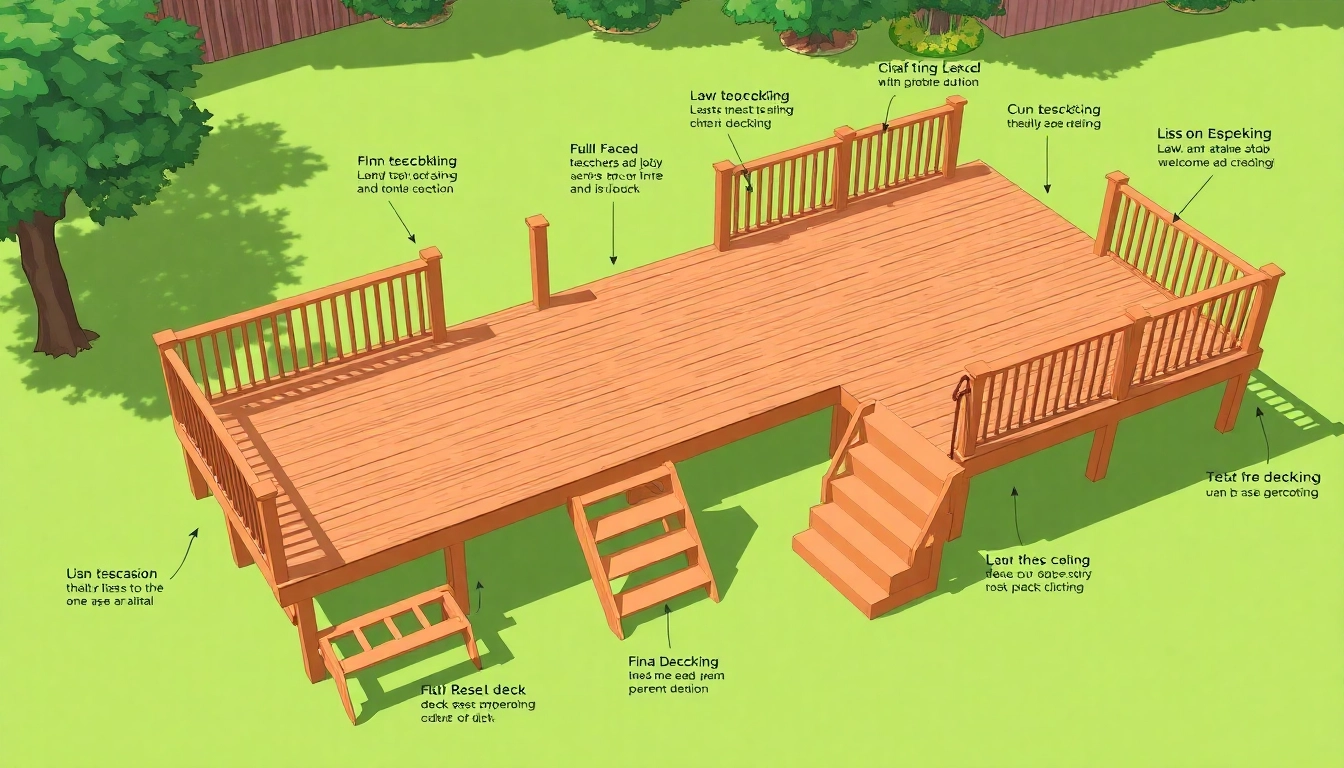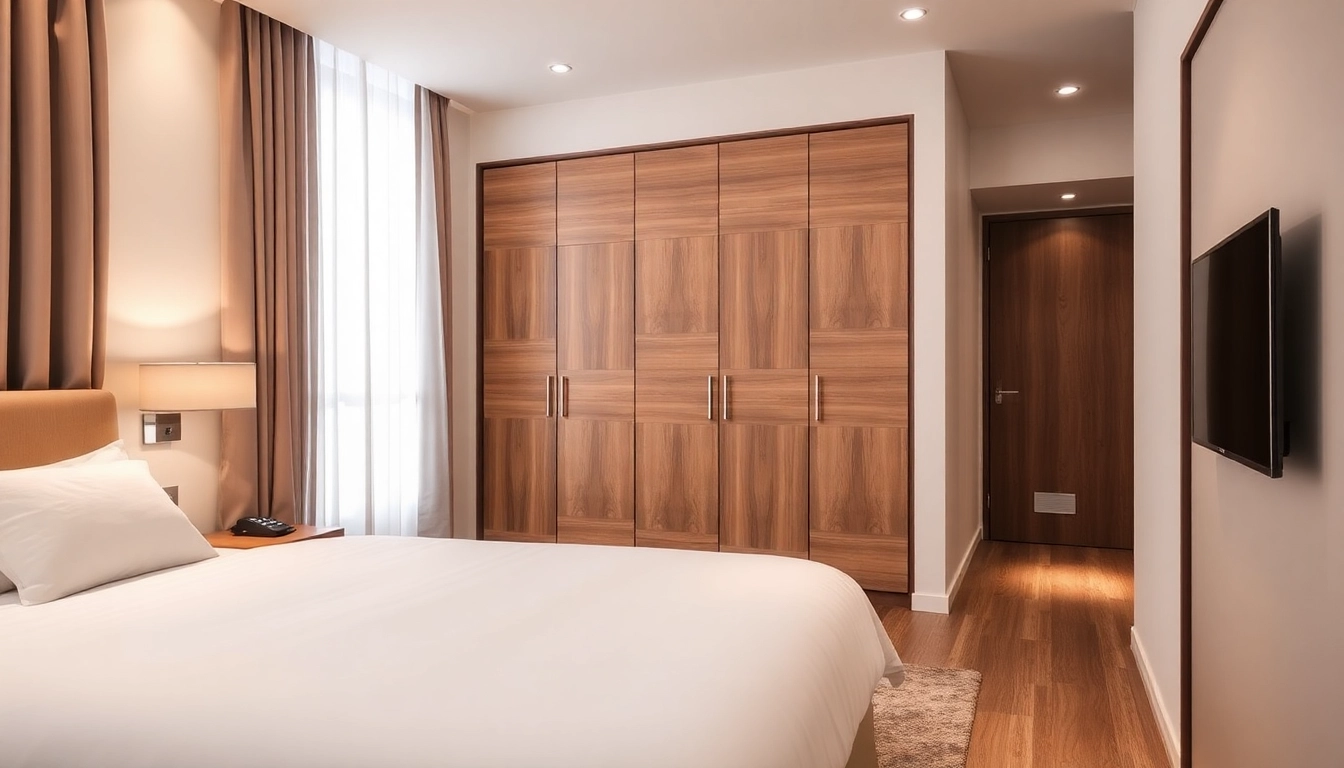Understanding Deck Construction Basics
When it comes to enhancing your outdoor space, deck construction stands out as a popular choice among homeowners. A well-built deck can serve as an extension of your living space, offering a perfect area for relaxation and entertainment. This guide aims to delve into the essential components of deck construction, providing you with a thorough understanding of what goes into building your dream deck.
What is Deck Construction?
Deck construction refers to the process of designing and building a raised platform adjacent to a building, usually made from wood or composite materials. Unlike patios, which are typically built at ground level, decks are elevated and can be attached to the house or freestanding in your backyard. The key components in deck construction include the foundation, framing, decking, and railing.
Key Materials Used in Deck Building
Understanding the materials used is crucial in deck construction. Here are the primary materials:
- Wood: A traditional choice, wood provides a natural aesthetic. Common types include pressure-treated lumber, cedar, and redwood.
- Composite: Made from a mix of wood and plastic fibers, composite decking is low-maintenance and resistant to rot.
- Aluminum: Increasingly popular due to its durability and modern look, aluminum decks are impervious to rust and insects.
- Concrete: Though less common for raised decks, concrete can provide a sturdy and long-lasting surface.
Common Deck Construction Terminology
Familiarizing yourself with deck construction terminology can help communicate more effectively with professionals and understand the building process:
- Footings: Concrete blocks or piers that support the deck’s structure.
- Joists: Horizontal beams that support the deck boards.
- Beams: A horizontal structure that supports the joists.
- Railing: Safety feature along the perimeter of the deck.
Planning Your Deck Construction Project
Proper planning is fundamental to ensure a successful deck construction project. This section covers the key considerations before beginning construction.
Choosing the Right Location
Location is one of the most critical aspects of deck construction. Consider factors such as sunlight exposure, proximity to trees, and views. Aim to find a spot that enhances your outdoor experience while aligning with your home’s layout.
Designing Your Ideal Deck Layout
Your deck’s design should integrate seamlessly with your home and garden. Consider the following:
- Size: Determine how much space you need based on frequency and type of use.
- Shape: Rectangular decks are common, but curves and multiple levels can add uniqueness.
- Style: Reflect your home’s architectural style in the choice of materials, colors, and railings.
Permits and Building Regulations
Before you start construction, check local building codes and regulations. Many municipalities require permits for deck construction, which may involve inspections to ensure safety standards are met.
Step-by-Step Deck Construction Process
Once planning is complete, it’s time to dive into the construction process. Here are the key steps:
Preparing the Site and Foundation
The first stage of construction is preparing your site. You must:
- Clear the area of any vegetation.
- Mark the layout using stakes and strings to ensure accuracy.
- Excavate for footings and install concrete piers as per your plan.
Assembling the Frame and Supports
With the foundation in place, you can install the framing:
- Attach ledger boards to your house to ensure stability.
- Install beams and joists, ensuring they are level and properly spaced to support the decking boards.
- Use double joists around the edges for added strength.
Finishing Touches: Decking and Rails
The final touches bring your deck to life:
- Install the decking boards perpendicular to the joists, leaving space for drainage between each board.
- Add railings and balusters for safety and aesthetic appeal.
- Complete the deck with stairs if necessary, following building codes for dimensions.
Deck Construction Best Practices
To ensure the durability and safety of your deck, follow these best practices:
Safety Tips During Construction
Safety should always be a priority. Here are the essential safety guidelines:
- Wear protective gear, including gloves, goggles, and a hard hat.
- Use scaffolding or ladders properly to ensure stability when working at heights.
- Keep your work area free of tools and debris to minimize trip hazards.
Maintenance Considerations for Longevity
Once your deck is complete, regular maintenance is crucial:
- Clean your deck seasonally to remove dirt, debris, and mold.
- Apply sealant or stain every few years to maintain its appearance and prevent weather damage.
- Inspect for any signs of wear or damage, repairing or replacing as necessary.
Eco-Friendly Deck Construction Options
Environmental considerations are becoming increasingly important in deck construction. Here are points to consider:
- Choose sustainably sourced wood or composite materials made from recycled plastics.
- Consider installing rain gardens or permeable surfaces that reduce runoff.
- Utilize solar-powered lighting for an eco-friendly ambiance.
Cost of Deck Construction and Budgeting Tips
Understanding the potential costs involved in deck construction can help you budget effectively. Here are the core aspects to consider:
Calculating the Total Cost
The total cost of deck construction varies significantly based on materials, size, and labor. On average, homeowners pay between $3,920 and $10,540 for a deck, equating to approximately $21 per square foot. Key cost factors include:
- Material choice (wood vs. composite)
- Size and complexity of the design
- Geographical location and labor rates
Cost-Saving Tips for Deck Building
Here are some suggestions for keeping your deck project within budget:
- Consider a DIY approach if you have the skills and tools.
- Shop around for materials, as prices can vary between retailers.
- Reduce the scale of your design or opt for less expensive materials.
When to Hire a Professional vs. DIY
Deciding whether to hire a professional or tackle the project yourself depends on several factors:
- If you’re confident in your skills and have the tools, DIY can be rewarding and cost-effective.
- For complex designs or where structural integrity is crucial, hiring an experienced deck builder is advisable.



